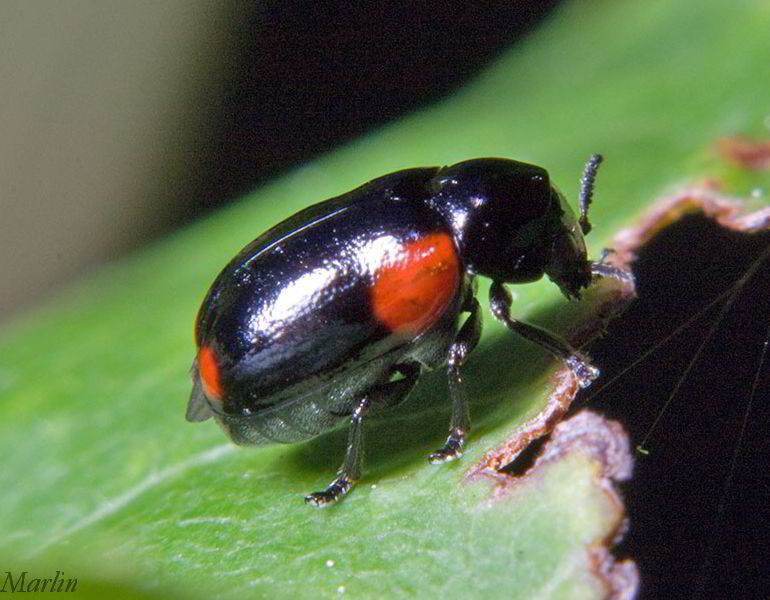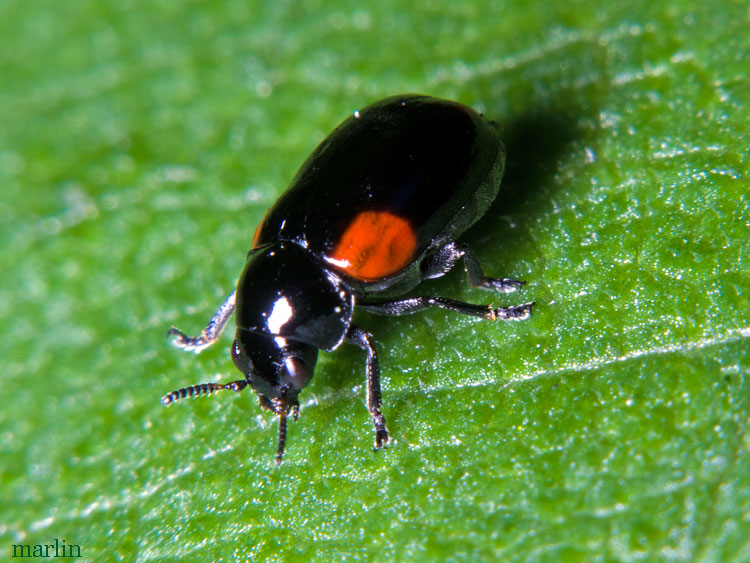Casebearing Leaf Beetle – Saxinis species

The larval stages of beetles in the subfamily Cryptocephalinae develop inside a case made of fecal material and plant debris, hence their common name “casebearer.” They are also known as “cylindrical leaf” beetles. There are about 345 species in 22 genera in North America.
Beetles in the family Chrysomelidae are commonly called leaf beetles. Chrysomelids are second in number of species only to the weevil family, Curculionidae. There are as many as 35,000 described species and perhaps up to 60,000 total species. Presently, the Chrysomelidae are classified in 195 genera and approximately 1,720 valid species and subspecies (plus 149 Bruchinae species) accepted as occurring in North America north of Mexico. [1]

Leaf beetles feed strictly on plant materials. The adults usually consume leaves, stems, flowers, and pollen. Most larvae are subterranean in habit, feeding on roots and rootlets, but others will consume foliage as well. Many chrysomelids are very specific to particular host plants, but most are able to live on a variety of plants; i.e. the so-called dogbane leaf beetle, Chrysochus auratus, which feeds on prairie plants such as milkweed (Asclepias sp.) and plants in the dogbane genus Apocynum. [2]
References
- JR, Ross H. Arnett et al., American Beetles, Volume II: Polyphaga: Scarabaeoidea through Curculionoidea, 1st ed.
- Jargen Gross, On the Evolution of Host Plant Specialization in Leaf Beetles (Logos, 2001).
Family: Chrysomelidae – Leaf Beetles / Cryptocephalinae (Case-bearing Leaf Beetles)
Beetles Main | Beetles Index | Longhorns | Soldier | Blister | Lady | Scarab
